Garage Ceiling Fan 101: Features and Top 5 Brands
Why a Ceiling Fan in Your Garage?
We often overlook the humble garage when considering home improvements, don’t we? Given the countless hours we spend there, tinkering with tools, working on DIY projects, or even turning it into a makeshift gym, it’s only logical that we focus on enhancing the comfort of this space. And this is where garage ceiling fan comes into play. Let’s delve deeper.
Temperature Regulation
The garage can be a tricky place when it comes to temperature. During sweltering summers, it transforms into a sauna, and in chilly winters, it can feel like an icebox. Enter the garage ceiling fan.
Summer Relief: Metal tools, cars, and concrete floors can trap heat, turning your garage into an oven. A ceiling fan effectively stirs up the air, ensuring a consistent flow. This action creates a cooling effect on your skin, much like how a gentle summer breeze feels when you’re out and about.
Winter Warmth: Ever noticed how heat tends to rise? In winters, heaters can leave the floor area cold while the heat hovers near the ceiling. A ceiling fan, especially those with a reverse function, pushes this warm air downwards, ensuring an even heat distribution.
Improving Air Circulation
A garage, by nature, isn’t the most ventilated space in our homes. With limited windows and often kept closed for security reasons, the air inside can become stale and stagnant. But there’s more to air circulation than just comfort.
Protect Your Health: When you’re sanding, painting, or using chemicals, harmful particles and fumes can linger in the air. Breathing these in isn’t ideal for your health. A ceiling fan ensures these contaminants are continuously circulated and dispersed, reducing their concentration.
Combat Moisture: Ever noticed that damp smell or seen signs of mold in garages? This is due to moisture buildup. Proper air circulation is crucial to reduce humidity levels. By keeping the air moving, a ceiling fan can help prevent mold growth and the musty odors associated with it.
Keep Pests at Bay: Still water and stale air are an open invitation to pests. Proper ventilation and circulation make it less likely for pests to make your garage their home.
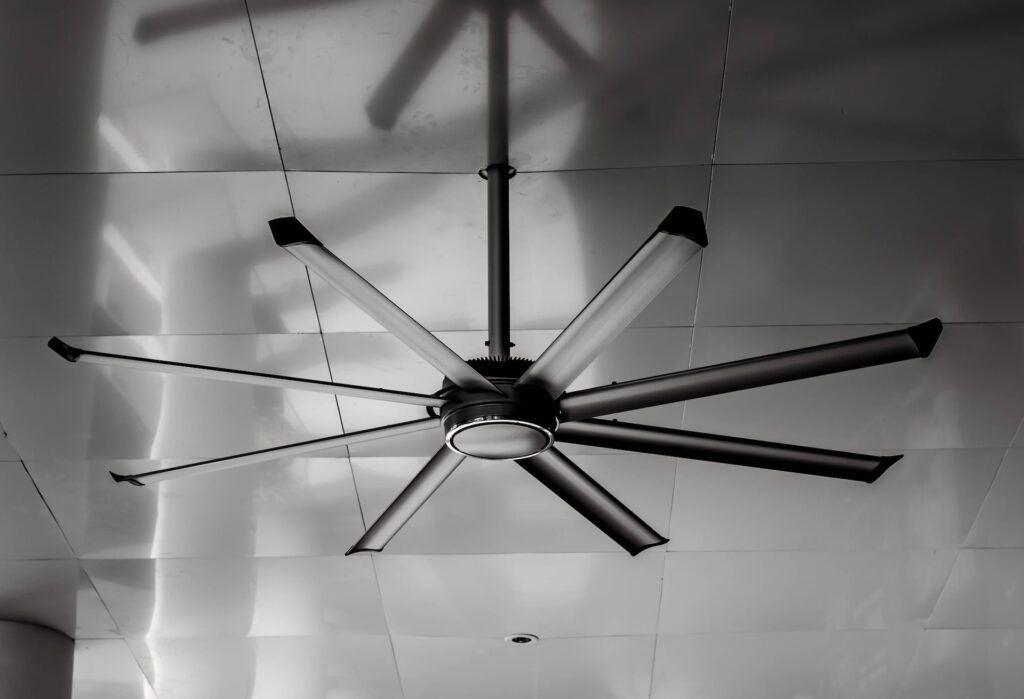
Features to Consider
Buying a garage ceiling fan isn’t as simple as picking up the first one you see. Specific features can be beneficial to your garage. Let’s deep dive into these crucial considerations:
Size and Dimensions
The size of your fan plays a pivotal role in its effectiveness. A mismatch can either leave you with an underperforming fan or an overpowering wind tunnel. Here’s what you should keep in mind:
Garage Size Matters: Start by measuring the square footage of your garage. As a general rule of thumb, a large garage (above 400 sq ft) will benefit from a fan that’s 62 inches or larger. For medium-sized garages (225-400 sq ft), something in the 48-58 inch range works. For smaller garages, a 32-44 inch fan should suffice.
Ceiling Height: Your fan should be high enough not to pose a hazard but low enough to be effective. If your garage has a particularly high ceiling, you might need an extension rod. For standard ceilings, a flush mount can be ideal.
Blade Span: A wider blade span ensures effective air distribution. But remember, wider isn’t always better. Match the blade span to your garage size for optimal results.
Motor Power
The heart of any fan is its motor. This little device dictates the fan’s performance, and here’s why it’s essential:
Performance: A powerful motor ensures consistent airflow and better circulation. This means faster cooling in summers and better heat distribution in winters.
Noise Level: A strong motor doesn’t always have to be noisy. Premium fans come with motors designed for silent operation. If your garage is adjacent to a bedroom or a living area, you’ll appreciate a quieter fan.
Versatility: Motors in higher-end fans often come with multiple speed settings, allowing you to adjust the airflow based on your needs.
Energy Efficiency
In an era where we’re conscious of our carbon footprint, energy efficiency isn’t just good for the planet; it’s also kind to your wallet.
Look for Ratings: Fans with Energy Star ratings typically consume 20-30% less energy than their counterparts. Over time, this can lead to significant savings.
Efficient Design: Features like aerodynamic blades can enhance a fan’s energy efficiency by optimizing airflow.
Remote Control and Automation: Some modern fans come with automation features, allowing them to turn on or adjust speeds based on ambient temperature, further enhancing energy efficiency.
Durability and Materials
Your garage is a rough and tough environment. It’s exposed to temperature fluctuations, humidity, and, let’s face it, the occasional stray tennis ball or tool. Your fan should be able to withstand it all:
Build Quality: Fans built using high-grade metals or robust polymers tend to have a longer lifespan. These materials resist wear and tear, ensuring your fan stays in top shape for years.
Weather Resistance: Given that garages can get humid or dusty, opting for a fan with weather-resistant or dust-resistant features can be a wise choice.
Safety Features: Look for fans with safety features such as overload protection or durable blade guards. This ensures that even if there’s a malfunction, the risks are minimized.
Top 5 Garage Ceiling Fan Brands
Exploring ceiling fan brands can be a challenge, especially when you’re looking for something tailored for your garage. But fear not! I’ve taken the liberty to sift through the crowd and bring you a curated list of the top 5 brands, renowned for their performance, durability, and innovation.
Hunter Fans
Hunter Fans have been a household name for over a century, seamlessly combining tradition with innovation.
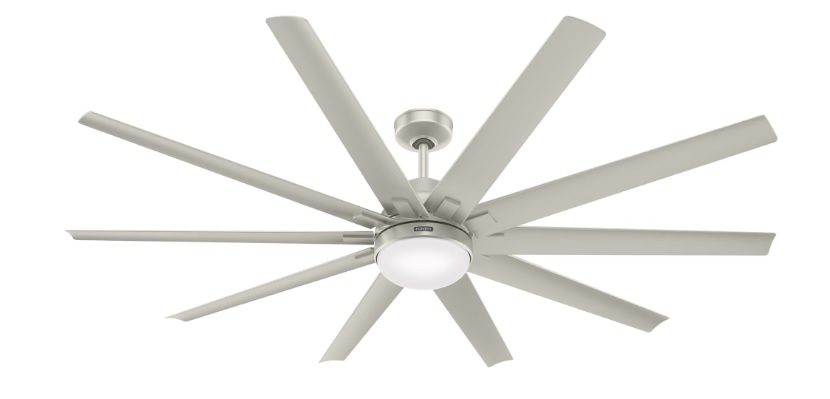
Key Features:
WhisperWind Motor: Their patented WhisperWind motor delivers ultra-powerful air movement with whisper-quiet performance.
Reversible Motor: This feature lets you change the direction of your fan from downdraft mode during the summer to updraft mode during the winter.
Build Quality: Made with high-grade materials ensuring longevity and durability.
Energy Efficiency: Many of their models are Energy Star rated, guaranteeing optimal performance with minimal energy consumption.
Big Ass Fans
Despite the quirky name, Big Ass Fans is serious about its products, especially when it comes to large spaces like garages.

Key Features:
Massive Air Movement: As the name suggests, these fans are built to move a significant amount of air, making them perfect for larger garages.
Smart Controls: Some of their models come with smart controls allowing integration with home automation systems.
Industrial Strength: Built for tough conditions, their fans are resistant to dust, humidity, and the rigors of a garage environment.
Silent Operation: Despite their size, they are surprisingly quiet, ensuring your garage remains a peaceful workspace.
Minka Aire
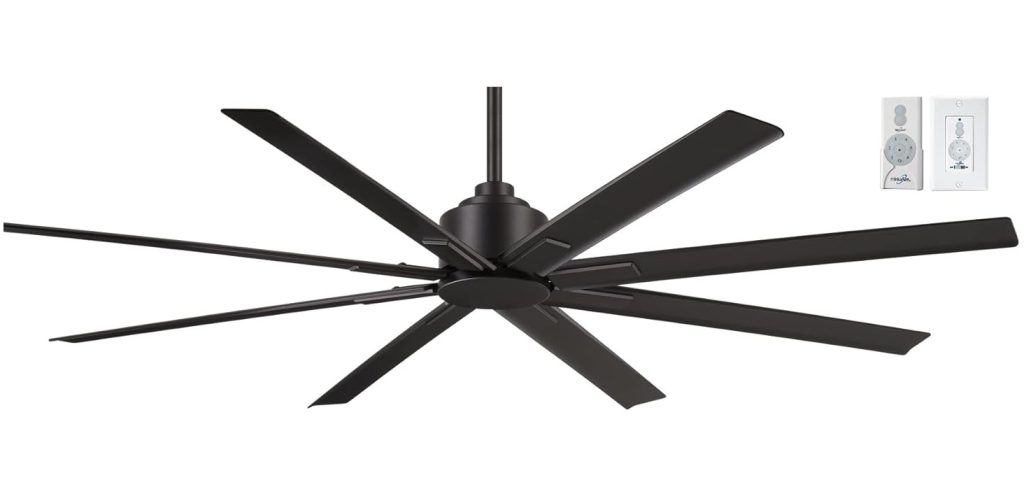
Minka Aire is renowned for its innovative and high-quality ceiling fans, combining functionality with style. Their fans are a blend of modern technology and artistic design, making them a popular choice for both residential and commercial settings.
Key Features:
Diverse Designs: Minka Aire offers a wide range of styles, from contemporary to traditional, to fit various interior décors.
Energy Efficiency: Many of their fans are designed with energy-efficient motors, reducing electricity consumption.
Advanced Control Options: Features like remote controls and smart home integration offer convenience in operation.
Quiet Performance: The fans are engineered to operate quietly, enhancing comfort in living spaces.
Quality Materials: Minka Aire uses high-grade materials for durability and longevity.
Westinghouse
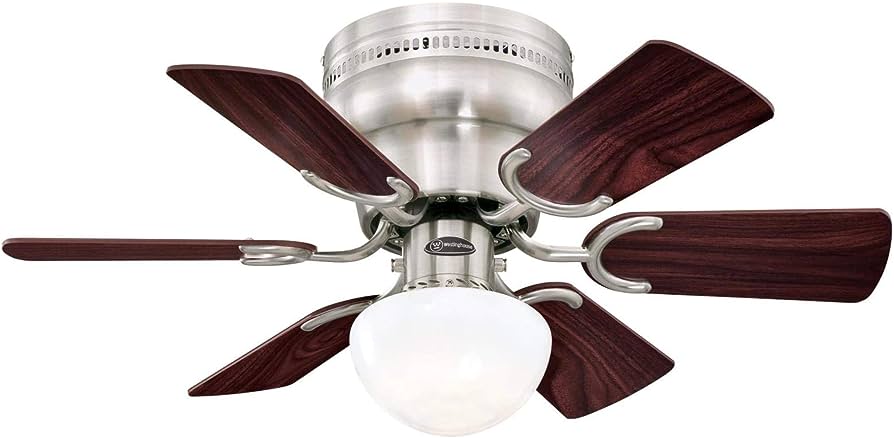
Westinghouse is a brand synonymous with quality and innovation. With their vast experience in electrical appliances, they have carved a niche in the ceiling fan market as well.
Key Features:
High-Quality Motor: Westinghouse prides itself on powerful motors that deliver consistent and optimal airflow.
Versatile Mounting: Whether your garage has a standard, low, or high ceiling, Westinghouse fans come with flexible mounting options to cater to all.
Energy-Efficient Designs: Many of their fans feature energy-saving technologies, ensuring you get the most out of every watt consumed.
Durable Build: Given the unique conditions of a garage, which can range from dust to fluctuating temperatures, Westinghouse fans are built with robust materials, ensuring they stand the test of time.
Fanimation
Fanimation has innovative designs and a penchant for pushing boundaries. They are fast becoming a favorite.
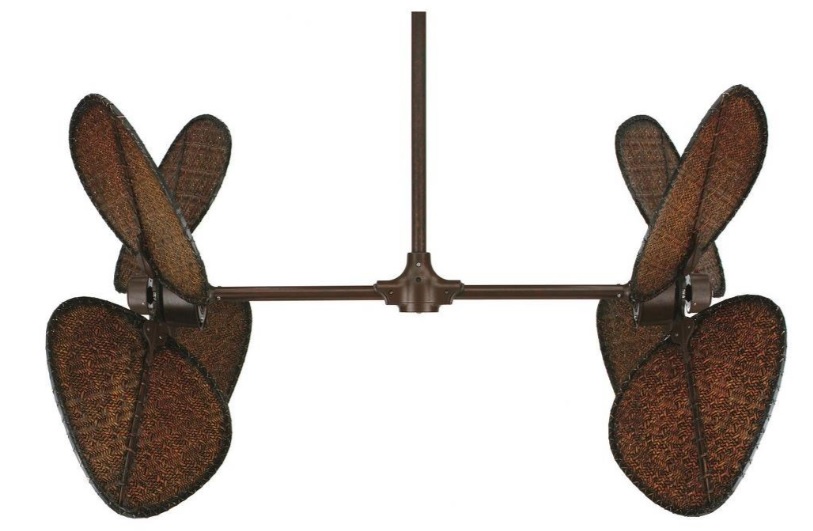
Key Features:
DC Powered Motor: Their use of Direct Current (DC) motors ensures energy efficiency and silent operation.
Unique Blade Designs: From helix blades to dual setups, Fanimation has been at the forefront of design innovations.
Integrated Tech: Many models feature integrated technologies like Bluetooth and Wi-Fi, allowing for app-based controls.
Adaptable Kits: Their fans often come with kits that can adjust the functionality, whether it’s adding lights or changing controls.
Conclusion
Choosing a garage ceiling fan might seem like a daunting task at first. With so many options, features, and brands to choose from, it’s easy to feel overwhelmed. But as we’ve explored together, making an informed decision isn’t as tricky as it initially appears. Whether you are working on a project in the sweltering heat of summer, or seeking refuge from the chilly fingers of winter, the right fan can make all the difference.
Key takeaways? Prioritize size and power according to your garage’s dimensions. Don’t compromise on durability, given the unique conditions of a garage. And while brands can offer a sense of reliability and trust, always focus on your individual needs and the features that cater to them.
Hunter, Big Ass Fans, Minka Aire, Emerson, or Fanimation – each of these giants brings their own flair to the table. Yet, the common thread binding them is a commitment to quality and innovation.
FAQs
1. Why is a garage ceiling fan different from other ceiling fans?
A garage ceiling fan is specifically designed to handle the unique conditions of a garage, which can include fluctuating temperatures, dust, and humidity. They often have more robust construction and features that cater to larger spaces, ensuring optimal airflow.
2. How do I determine the right size for my garage ceiling fan?
The size of your fan largely depends on the size of your garage. As a rule of thumb, for smaller garages (up to 225 sq. ft.), a 42-44 inch fan would suffice. For medium-sized garages (up to 400 sq. ft.), a 48-54 inch fan is ideal. For larger spaces, consider fans that are 56 inches or more.
3. Can I install the garage ceiling fan myself, or do I need a professional?
While many enthusiasts opt for DIY installations, if you’re not familiar with electrical installations, it’s recommended to hire a professional. This ensures the fan is installed securely and operates safely.
4. Are there garage ceiling fans that come with lights?
Yes, several brands offer garage ceiling fans with integrated lighting solutions. This can be especially useful if your garage lacks sufficient lighting, allowing the fan to serve a dual purpose.
5. How often should I maintain or clean my garage ceiling fan?
Given that garages can accumulate dust and grime faster than other areas of the house, it’s advisable to clean the blades at least once a month. Regularly check for any loose fittings or unusual sounds. Depending on usage, a bi-annual maintenance check-up can ensure your fan’s longevity.





Comments are closed.